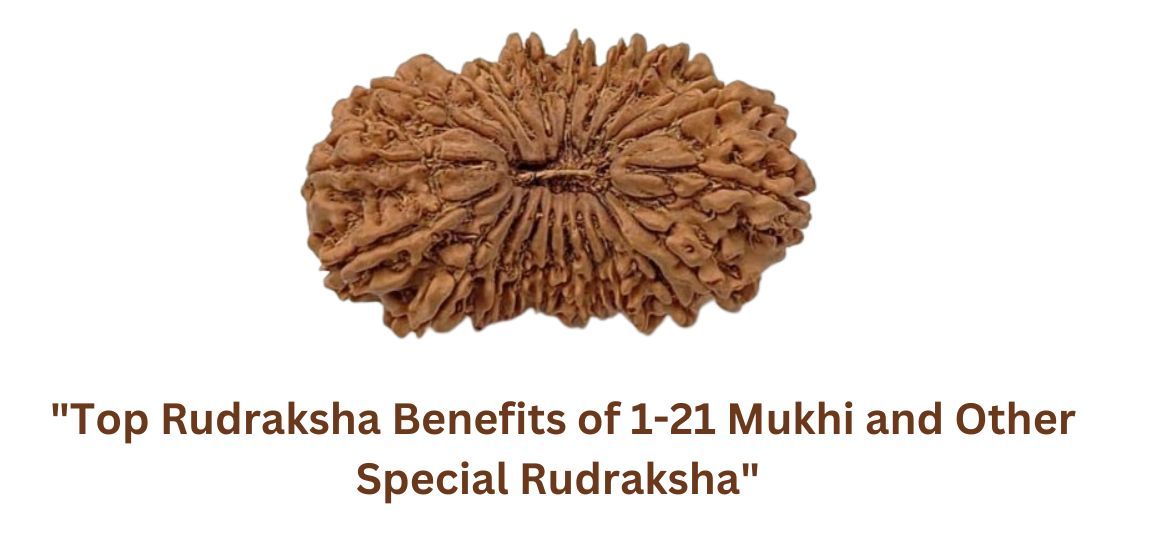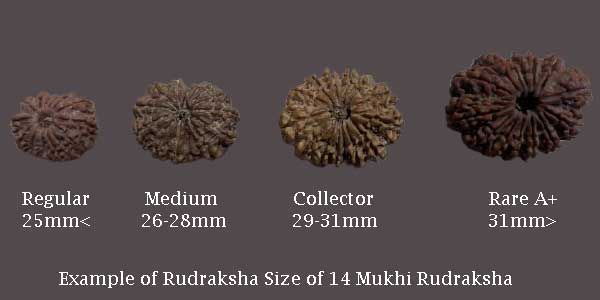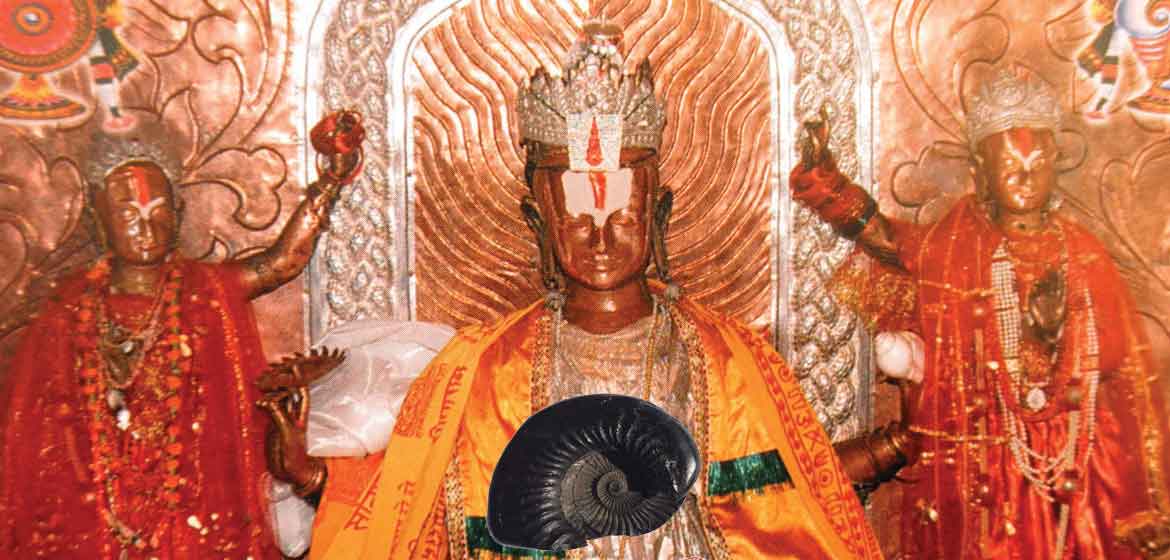Everything You Need to Know Before Visiting Pashupatinath Temple
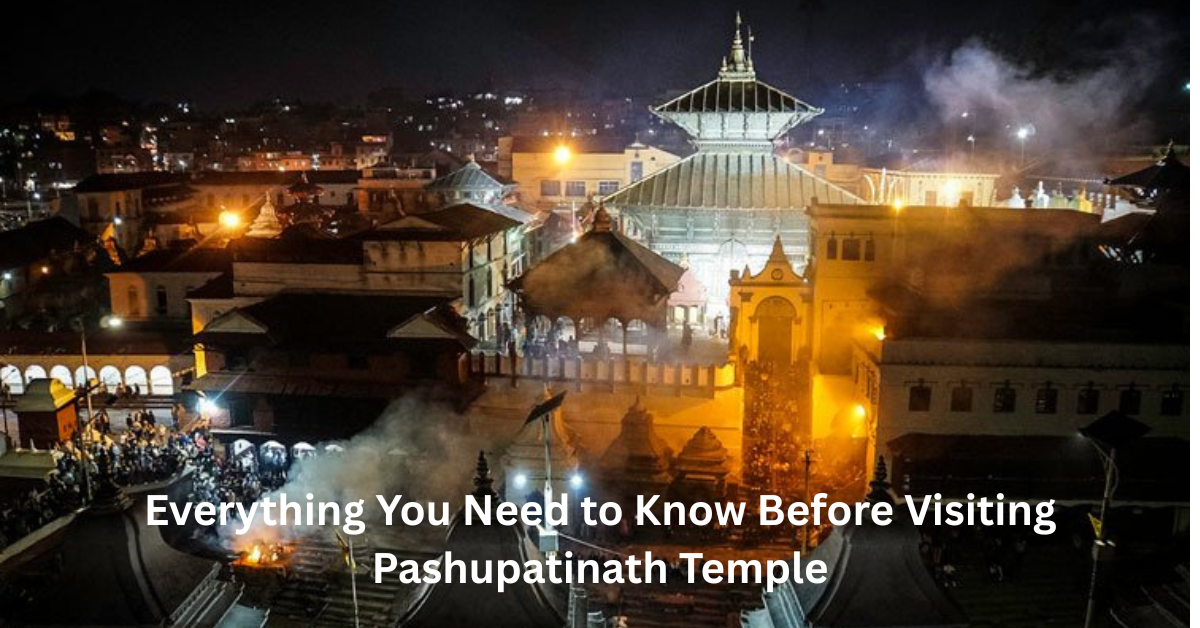
Historical Significance of Pashupatinath Temple
Pashupatinath Temple is one of Nepal's oldest and most sacred Hindu temples, dating back to the 5th century CE. Located in the capital city of Kathmandu, just 2 kilometers (a 7-minute drive) from Tribhuvan International Airport, it has long served as a spiritual heart for devotees of Lord Shiva.
The temple has witnessed centuries of cultural evolution and the rise and fall of dynasties and remains a living monument to Nepal’s deep spiritual roots. In 1979, Pashupatinath was designated a UNESCO World Heritage Site as part of the Kathmandu Valley heritage zone, recognized for its architectural brilliance, religious importance, and cultural legacy.
Adjacent to the temple, the banks of the sacred Bagmati River host open-air cremation ghats used for Hindu last rites. This site reflects Hindu philosophy of life, death, and rebirth. Observing these rites can offer visitors a deeper understanding of Nepalese customs and Hindu spiritual beliefs.
Religious Importance & Major Festivals
Dedicated to Lord Shiva, Pashupatinath is one of the holiest pilgrimage sites for Hindus worldwide. It is believed that visiting this temple cleanses one's sins and paves the path to moksha (liberation). Daily worship, grand aartis, and various rituals are performed here, attracting a constant flow of pilgrims.
Special days include: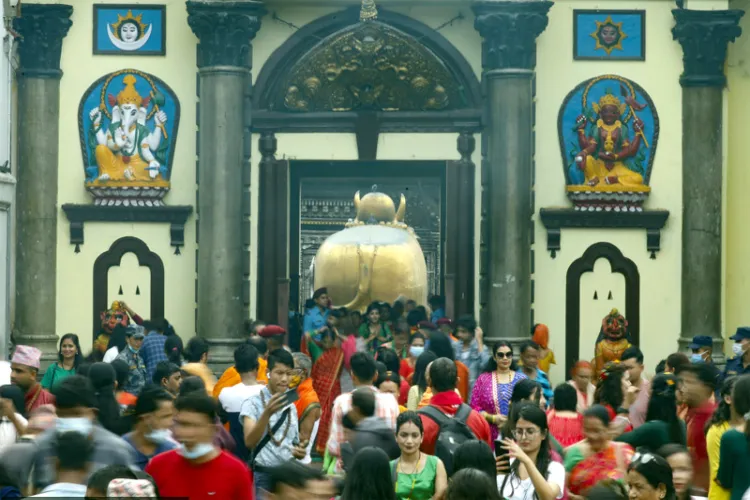
Maha Shivaratri – The most significant festival at Pashupatinath, drawing over a million devotees.
Teej – Celebrated primarily by women for marital bliss and family harmony.
Bala Chaturdashi – A sacred ritual of scattering seeds to remember the deceased.
Janai Purnima is a major Hindu festival celebrated on the full moon day (Purnima) of the month of Shrawan (July–August). It's a day of purification, protection, and renewal of spiritual commitments.
Mondays – Considered especially auspicious for Lord Shiva worship.
Saturdays – Weekend holiday in Nepal, attracting more visitors.
Unique Architecture of the Temple
Pashupatinath Temple is an architectural gem featuring a traditional Nepali pagoda-style design. The two-tiered golden roof, silver-plated doors, and finely carved wooden rafters reflect ancient artistry and sacred symbolism. The Pashupatinath Shivalinga has five faces, each representing a different aspect of Lord Shiva.
Legends and Myths Behind the Temple
According to legend, Lord Shiva once roamed the forests of Kathmandu Valley as a deer. When the gods found him and tried to bring him back, Shiva left behind one of his divine symbols—the linga. This self-manifested (Swayambhu) Shivalinga became the heart of Pashupatinath. Among the 12 Jyotirlingas in India, Pashupatinath is the head (crown) of all Jyotirlingas. Devotees believe that without the darshan of Pashupatinath, the pilgrimage to the 12 Jyotirlingas remains incomplete. Uniquely, this Shivalinga has five faces, each facing a cardinal direction and representing Shiva's five cosmic manifestations:
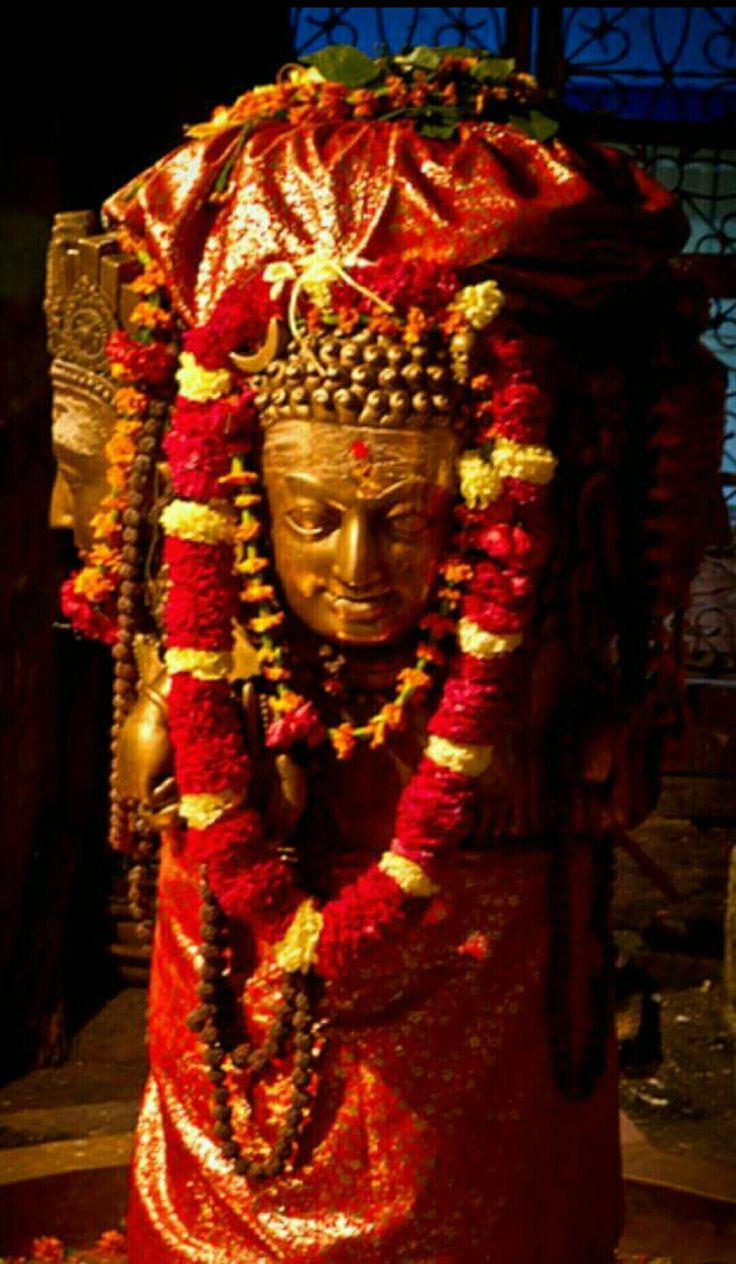
- Tatpurusha (East): Represents spiritual awakening and introspection. It is linked to air and the inner self, promoting meditation and breath awareness.
- Aghora (South): Symbolizes transformation, destruction of ego, and the fierce energy of renewal. It is associated with fire and cremation grounds.
- Vamadeva (North): Stands for beauty, grace, and compassion. This face is tied to water, harmony, and Shiva’s peaceful form.
- Sadyojata (West): Shiva's creative force, symbolizing fertility and life, is linked to the earth element.
- Ishana (Zenith/Upward): Shiva's omnipresent and supreme consciousness. Governs the ether element and spiritual liberation.
Important deities and shrines inside the temple complex:
- Bashuki Dev
- Baglamukhi
- Ganesh Temple
- Surya Temple
- Gupteshwor Mahadev
- Santaneshwor Mahadev
- Shree Yantra (near Bhagmati River)
- Kaal Bhairav
- Kirtimukha Bhairav
- Hanuman
- Nava Durga (Nou Devi)
- Nau Ghar (Nine Shrines)
- Bhagmati River Darshan
- Big Nandi
- 525 Shivlingas
These add to the spiritual experience, and devotees are encouraged to explore them during their visit.
The Sacred Connection Between Pashupatinath and Kedarnath Shivalingas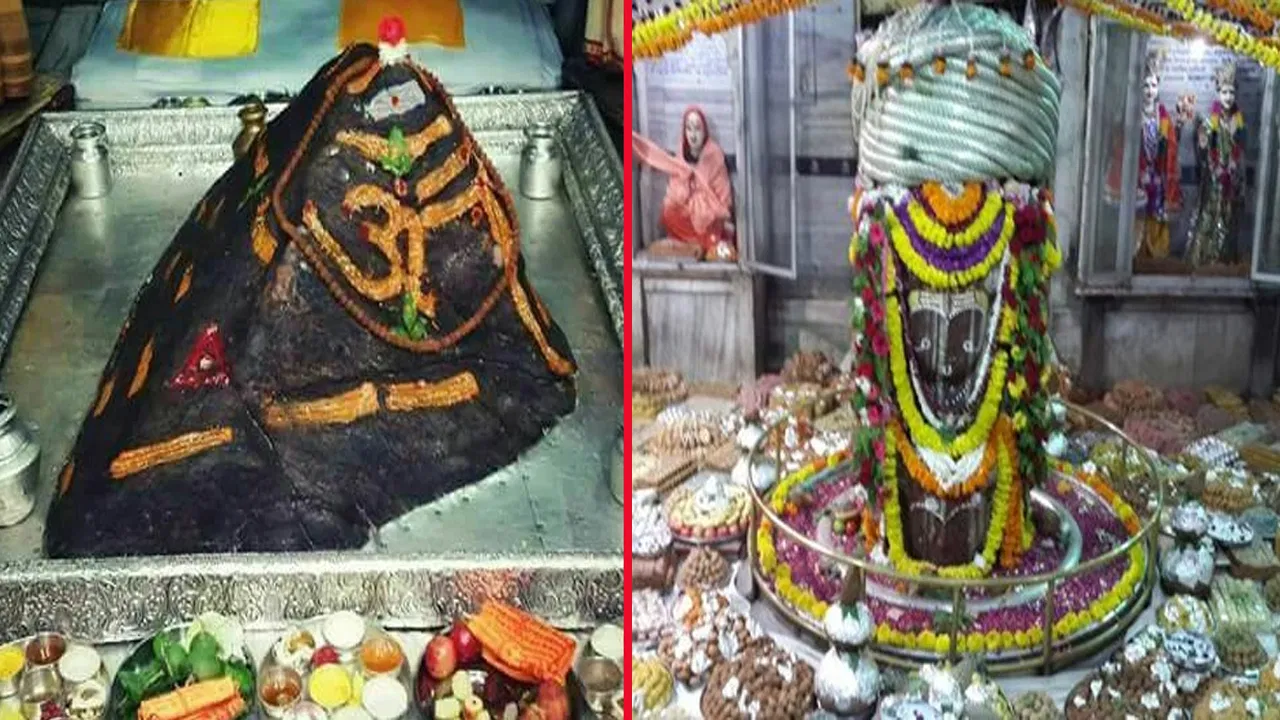
Pashupatinath in Nepal and Kedarnath in India are two of the most revered temples dedicated to Lord Shiva, and they are deeply connected through ancient Hindu beliefs and mythology. These two Shivalingas are believed to represent different parts of Lord Shiva's divine body, making them spiritually inseparable in the eyes of devotees.
According to Hindu tradition, the Shivalinga at Kedarnath symbolizes the hump or back of Lord Shiva, while the Shivalinga at Pashupatinath is considered the head or crown. This cosmic symbolism signifies that these temples are two separate pilgrimage sites and part of one greater divine form.
The legend behind this connection traces back to the Mahabharata era. After the Kurukshetra war, the Pandavas sought Lord Shiva’s blessings to absolve their sins. Shiva, avoiding them, took the form of a bull and disappeared into the earth. His body parts are believed to have appeared in different places, now sacred temples. Kedarnath marks where Shiva’s back appeared, and Pashupatinath is believed to be where his head emerged.
Because of this spiritual bond, many devotees believe that the pilgrimage to Kedarnath is incomplete without visiting Pashupatinath, and vice versa. This connection is also why pilgrims who visit Pashupatinath often go on to undertake the Kailash Mansarovar Yatra, continuing their journey to attain moksha.
The Shivalingas of Pashupatinath and Kedarnath form a divine alignment of Lord Shiva’s energy, symbolizing balance, unity, and the journey from the physical to the cosmic.
In the 21st century, Doleshwor Mahadev is recognized as the head portion of Kedarnath.
Doleshwor Mahadev Temple, located in Suryabinayak Municipality, Bhaktapur District, Nepal, is revered as the head part of the Kedarnath temple in Uttarakhand, India. Shree 1008 Jagat Guru Bheemashaankarling Shivacharya, the head priest of Kedarnath, officially declared this connection in 2009.
According to Hinduism, the Pandavas sought Lord Shiva to atone for their sins after the Kurukshetra war. Shiva, avoiding them, took the form of a bull. When the Pandavas discovered him, he disappeared into the ground, leaving his body parts to appear at different locations: the hump at Kedarnath, the arms at Tungnath, the face at Rudranath, the navel at Madhyamaheshwar, and the hair at Kalpeshwar. These five sites are collectively known as the Panch Kedar.
The Doleshwor Mahadev Temple is of immense cultural and religious significance. A pilgrimage to Kedarnath is believed to be incomplete without visiting both Pashupatinath and Doleshwor Mahadev. The temple hosts major celebrations during the holy month of Shrawan and during the Maha Shivaratri and Teej festivals, attracting numerous devotees seeking blessings from Lord Shiva.
Importance of the Pashupatinath Yatra
Millions of pilgrims visit the temple each year to perform darshan and pooja. It is believed that worshipping here liberates one from animal rebirth and karmic sins, especially those related to harm against living beings.
As mentioned in the Mahabharata, the Pandavas visited Pashupatinath after the great war to atone for their sins, especially the killing of revered gurus and animals. They later continued their journey to Mount Kailash to seek complete liberation (moksha).
Today, many yatris combine their visit to Pashupatinath with the Kailash Mansarovar Yatra, believing this combined pilgrimage deepens their spiritual path. If you plan this yatra, Onsyatra, a legally registered organization in Nepal and the USA, offers trusted spiritual tours.
Who is allowed to touch the Shivalinga at Pashupatinath?
1. Main Priests – Bhatta Priests
- The Bhatta priests are the only individuals permitted to physically touch the main Shivalinga and perform inner sanctum rituals.
- They come from South India, particularly Karnataka and Andhra Pradesh, and are selected based on their deep knowledge of Vedic scriptures and strict adherence to Brahminical codes of purity.
- These priests belong to the Adi Shankaracharya tradition and are celibate, following a sattvic (pure) lifestyle.
2. Bhanda Priests (Assistants)
- Locally known as Bhanda or Rajopadhyaya Brahmins, these are Newar Brahmins from Nepal.
- While they do not touch the main Shivalinga, they assist in managing rituals, temple offerings, and devotee coordination.
- They also help guide pilgrims in outer areas and maintain order during large festivals.
Pooja Tickets and Ritual Services In Pashupatinath Temple
Book pooja services online or directly at the SBI counter opposite the temple's main gate. Common rituals include: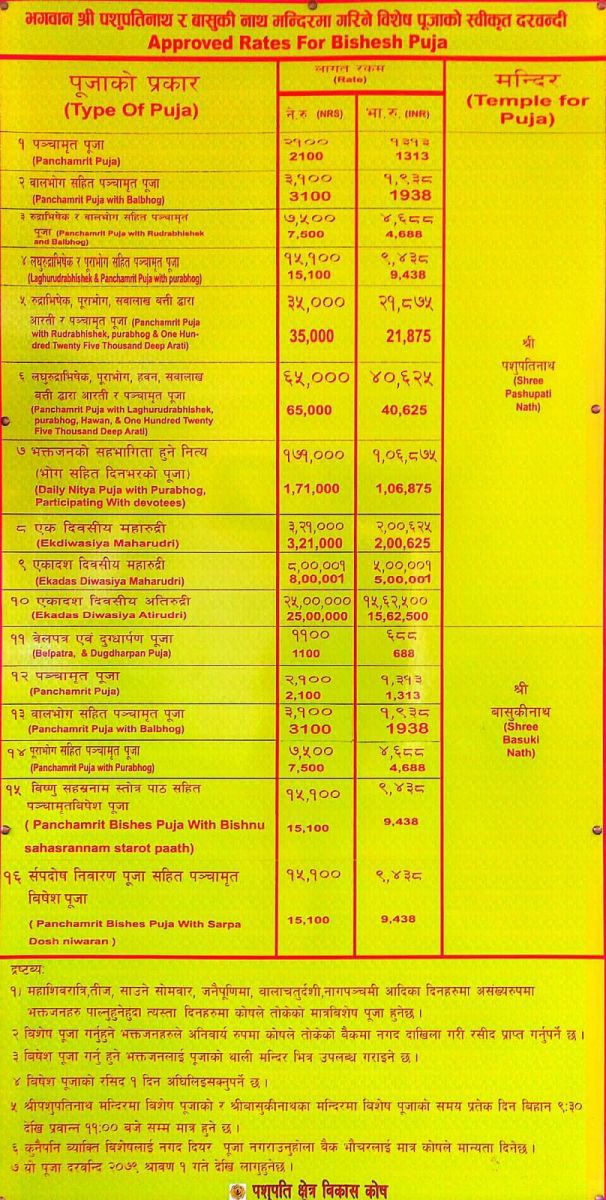
"Abhishek Puja is performed daily at Pashupatinath Temple from 9:30 AM to 12:00 PM."
Daily Rituals at Pashupatinath Temple
Pashupatinath Temple follows a sacred daily schedule of rituals that draws devotees from all over the world. One of the main highlights is the Abhishek Puja, performed every morning between 9:30 AM and 12:00 PM, where the Shiva Linga is bathed with water, milk, honey, and other sacred offerings. In the evening, the temple resonates with spiritual energy during the Sandhya Aarti (Evening Aarti), held from 6:00 PM to 7:00 PM, accompanied by chanting, lamps, and music on the banks of the Bagmati River.
Rudrabhishek
Panchamrit Abhishek
Special Aartis and Offerings
Prices depend on the type of ritual and offerings. Booking is recommended during festival seasons.
What to Offer in Pashupatinath Temple
Fresh Flowers – Symbolizing purity and devotion, offered to honor the divine presence.
Bilva (Bel) Leaves – Considered one of Lord Shiva’s favorite offerings, representing the trinity of creation, preservation, and destruction.
Rudraksha Beads – Sacred seeds associated with Shiva himself, often offered or worn during worship.
New Clothing – Offered as a mark of respect and surrender, especially during special rituals.
Jewelry – Devotees sometimes offer ornaments as a token of gratitude or in fulfillment of vows.
Pure Cow Milk – Used during Abhishekam (ritual bathing) of the Shivalinga, believed to purify the soul.
Holy Water – Typically sourced from rivers like the Ganga, used to cleanse and sanctify the lingam.
Monetary Donations – Offered in temple donation boxes to support maintenance and daily rituals.
Visiting Hours and Darshan Timings for Pashupatinath Temple
The temple follows a strict darshan schedule:
4:00 AM – 8:00 AM: All four-faced darshan
8:00 AM – 9:30 AM: Single face darshan
9:30 AM – 12:00 PM: All four-faced darshan
12:00 PM – 2:00 PM: Single face darshan
2:00 PM – 5:30 PM: Temple doors remain closed
5:30 PM – 6:30 PM: Single face darshan resumes
6:30 PM – 7:15 PM: Final all four-faced darshan
7:15 PM-- 4:00 AM: Temple doors remain closed
Note: Non-Hindus are not allowed in the inner sanctum but can explore the surrounding areas and view rituals from designated zones.
Photography and videography are strictly prohibited inside the temple premises.
Only Bhatta priests may enter the inner sanctum (Garbhagriha) and touch the Shivalinga.
Devotees, including Hindus, can have darshan from a short distance, but touching the lingam is not allowed.
While visiting Pashupatinath, don’t miss these sacred and cultural landmarks:
Nearby Attractions:
Guhyeshwari Temple – A powerful Shakti Peeth nearby
Boudhanath Stupa – One of the world’s largest Buddhist stupas
Old Kathmandu – Renowned for its temples, heritage streets, and Newari architecture
Rudraksha Markets – Famous for authentic and high-quality Rudraksha beads sourced from Nepal
These locations complete the spiritual experience for any traveler.
Final Thoughts
Pashupatinath Temple is more than just a temple—it is a gateway into Nepal's spiritual heart. Its sacred rituals, mythological roots, and divine presence create a profoundly moving experience. Whether you seek blessings, inner peace, or cultural exploration, a journey to Pashupatinath will stay with you forever.
Ashish Modi
Shiva Devotee

 USD
USD
 INR
INR CAD
CAD GBP
GBP AUD
AUD MYR
MYR AED
AED SGD
SGD




